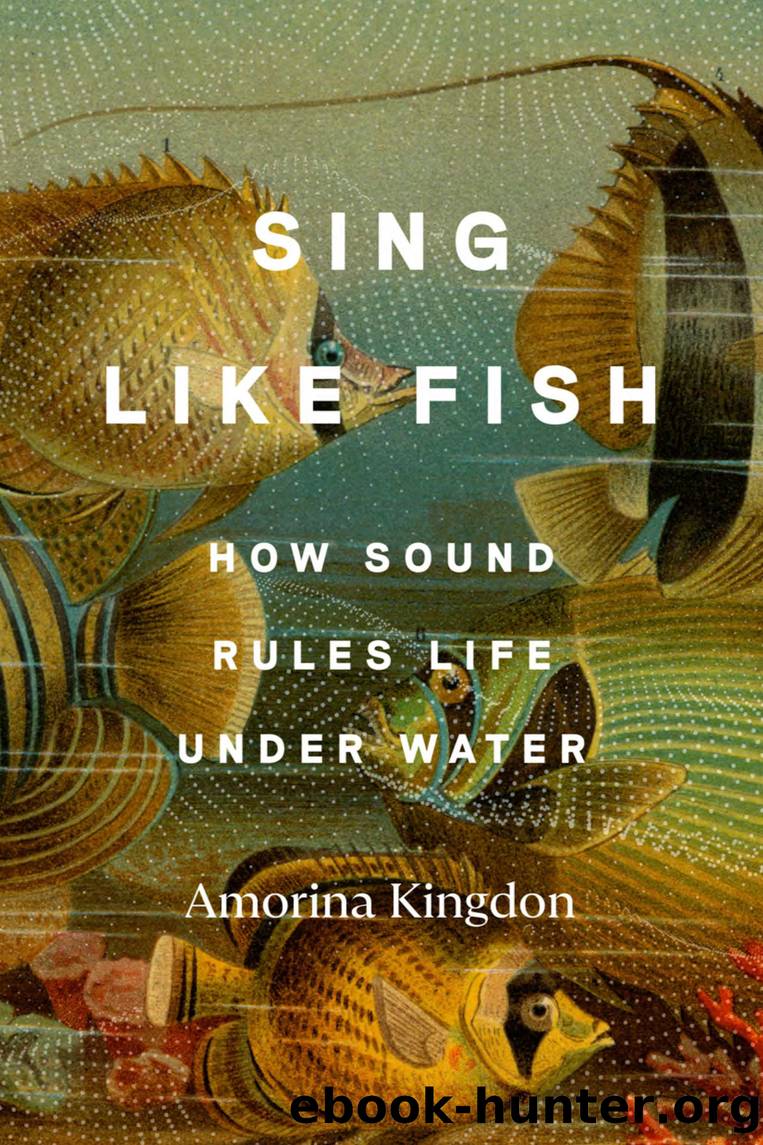Sing Like Fish by Amorina Kingdon

Author:Amorina Kingdon [Kingdon, Amorina]
Language: eng
Format: epub
Publisher: Crown
Published: 2024-06-04T00:00:00+00:00
* * *
â
The Bass Strait separates the state of Victoria, Australia, from the island of Tasmania. More than twenty oil and gas platforms dot the waters, and seismic surveys take place regularly. The strait is also a fishing ground for scallops and lobsters, and in 2011 the Tasmania Scallop Fishermenâs Association blamed a recent seismic survey for the loss of 24,000 tons of scallops and tens of millions of dollars in income. Had the air guns killed the scallops?
Jayson Semmens is a marine biologist at the University of Tasmania, and he wondered how seismic air-gun sound might affect commercial species. He was also with IMAS, so he collaborated with McCauley and others to set up an acoustically rigorous test. The team collected wild lobsters and scallops and moved them to test sites in the sea alongside a hydrophone, a geophone, and a video camera. Then they fired an air gun in the water above and gave the animals a thorough exam.
No lobsters died. Many females were full of eggs that developed normally. But the rest of the news was less good.
Basically, the lobsters lost their balance. These crustaceans have a reflex to right themselves if theyâre flipped on their back, but after the air guns were fired, they took more than twice as long to do so. When Semmens looked closely at the lobstersâ statocysts, fluid-filled sacs lined with sensory hair cells at the base of the antennae, the hair cells were damagedâthe hairs âsheared off,â as he puts it. Since statocysts sense gravity and orientation, this would obviously upset their coordination. Lobstersâ blood chemistry changed, too, in ways that suggested a trauma response, leaving them more vulnerable to infection.
As for the scallops, changes in their âblood,â a fluid called hemolymph, suggested chronic compromised immunity. And many scallops later died, with deaths peaking three months after the experiment. That pointed at trauma with a long tail, the kind that doesnât kill outright but insidiously. If one didnât know what to look for, a casual glance might have suggested the scallops were fine.
Semmens says he could see the air gun had caused a physical shock. The lobsters were on a rocky limestone site, while the scallops were sitting on a sandy bottom, and in the video of the scallop test, Semmens saw the sand jumping with the force. Whether the physical shock or the stress of the sound caused the problems in the animals, he couldnât tell. Either way, there was a literal impact.
Semmens got a lot of âgrief,â as he puts it, from the oil and gas industry for this study. They claimed a single gun wasnât equivalent to an array and the water was far shallower than real-world conditions. The only way to know was to use a commercial array. So thatâs what he did next.
Working with a seismic prospecting company is logistically challenging, as McCauley describes. But Semmens was determined. He even included juvenile lobsters in his study, understanding that effects on young animals could have bigger cumulative effects throughout the life cycle.
Download
This site does not store any files on its server. We only index and link to content provided by other sites. Please contact the content providers to delete copyright contents if any and email us, we'll remove relevant links or contents immediately.
The Lonely City by Olivia Laing(4748)
Animal Frequency by Melissa Alvarez(4395)
All Creatures Great and Small by James Herriot(4232)
Walking by Henry David Thoreau(3893)
Exit West by Mohsin Hamid(3777)
Origin Story: A Big History of Everything by David Christian(3648)
COSMOS by Carl Sagan(3554)
How to Read Water: Clues and Patterns from Puddles to the Sea (Natural Navigation) by Tristan Gooley(3406)
Hedgerow by John Wright(3275)
The Inner Life of Animals by Peter Wohlleben(3259)
How to Read Nature by Tristan Gooley(3249)
How to Do Nothing by Jenny Odell(3232)
Project Animal Farm: An Accidental Journey into the Secret World of Farming and the Truth About Our Food by Sonia Faruqi(3177)
Origin Story by David Christian(3147)
Water by Ian Miller(3127)
A Forest Journey by John Perlin(3027)
The Plant Messiah by Carlos Magdalena(2883)
A Wilder Time by William E. Glassley(2818)
Forests: A Very Short Introduction by Jaboury Ghazoul(2790)
